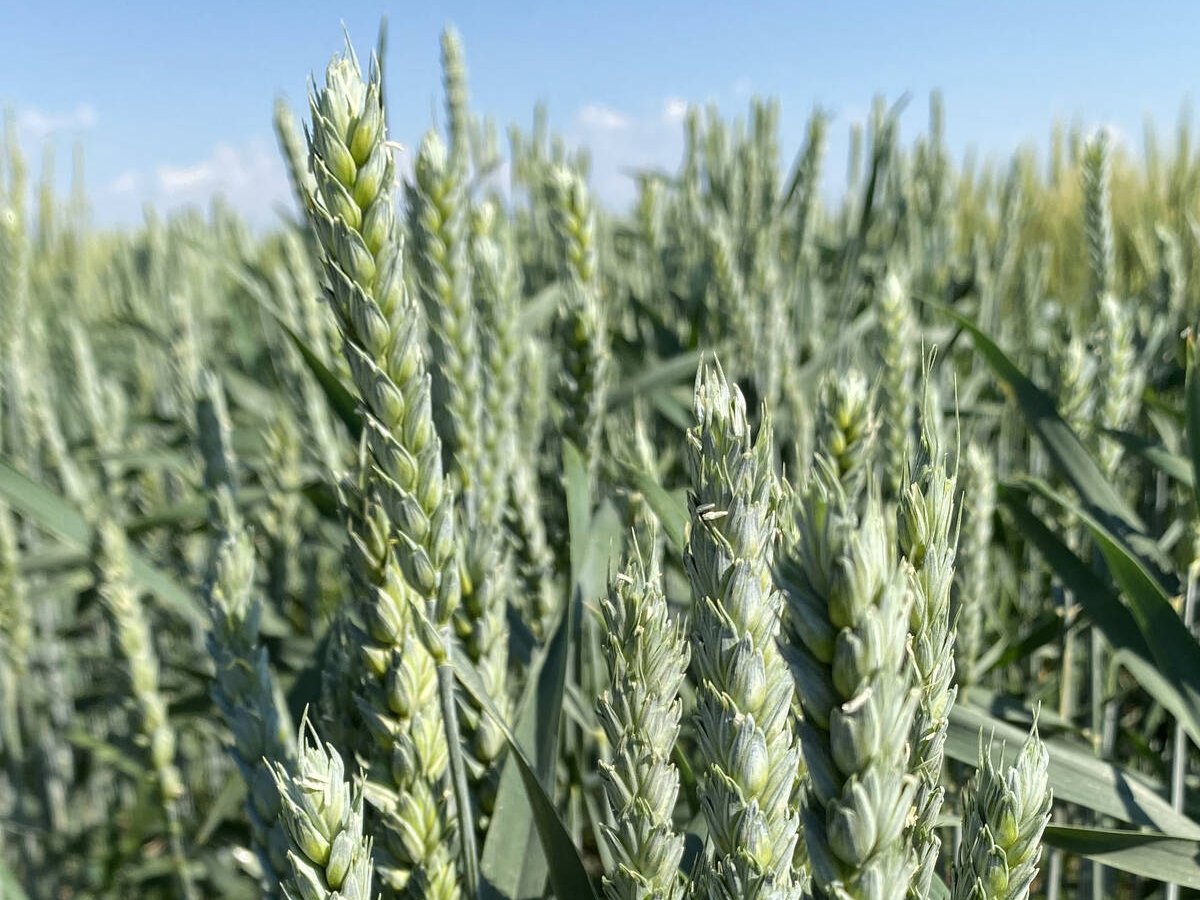This spring, Western Producer reporter Ian Bell travelled the Prairies to talk to producers about the promise of the coming year. Last week, he was on the road again, talking to farmers in Manitoba about this year’s crop. This week’s story focuses on Saskatchewan. Alberta will be featured next week.
BIENFAIT, Sask. – Elmer Lafrentz cursed the wind while trying to bale some slough hay at a farm east of Bienfait. The wind tore the swaths apart and peppered Lafrentz’s face with dust and dirt, causing tears to stream from his eyes.
Read Also

Discovery promises big wheat yield gain
University of Maryland researchers have discovered a gene that produces three grains per wheat floret instead of the usual one.
“It gets awful tiresome after a while,” he said of the wind and heat that farmers in his area endured this summer.
Lafrentz lives in Estevan but returns to the fields each year to help his son farm. Their experiences with cropping this year were similar to those of many producers in Saskatchewan’s south and west. The crops got off to a good start in the spring but then struggled with the arrival of hot, dry weather in July and August.
Lafrentz said his son’s wheat yielded 16 to 22 bushels per acre while the oats came in at 35-40 bu. per acre. The crops were grown organically.
“The barley kind of burned up pretty badly on us.”
As of Sept. 9, they still had a flax crop to harvest. Grasshoppers were thick this year, and there was concern the pest insects would be drawn to the green stems of the flax, taking a further bite out of potential yields.
“There’s plenty of hoppers to worry about next year if they all lay their eggs,” said Lafrentz, remembering a string of years in the 1980s when the grasshoppers also flourished in their area.
His son also runs a cow-calf operation. Hay supplies are fair, said the senior Lafrentz, noting that a lot of producers had carryover from last year. Their biggest concern remains the future of Canadian cattle and beef exports to the United States, and how soon those will return to normal.
“We’re hoping it’s going to be a better fall.”
At Marengo, Sask., Sean Zunti is sitting in the cab of a grain truck, waiting to deliver wheat to the local elevator. He farms with his father-in-law and they both work in the oil patch to earn extra income.
“The oil wells are probably the only thing keeping a lot of farmers going in this area,” said Zunti, who arrived at the elevator during the lunch hour, earning him a place at the head of a line of trucks waiting to deliver grain.
The elevator is owned collectively by a group of producers. It doesn’t take long to fill once word goes out to grain growers that they can deliver there.
Zunti had already delivered two truckloads earlier in the day. As the minutes tick by after lunch, he wondered whether the elevator would be able to take his third load.
The same question was running through the minds of other producers, prompting some to hop out of their trucks to check with the elevator workers. A strong wind whipped the cap off the head of one producer on his way to the elevator.
Zunti is lucky. He got the go-ahead to unload his grain, which was grown this year with the usual mix of sweat, worry and expensive farm inputs.
Soil moisture was good in their area this spring but then petered out through the growing season. Zunti said their wheat yielded 15 bu. per acre. They were selling it for $2.15 a bu.
The cost of growing the crop will surpass what they get paid for it. After subtracting expenses from expected income, Zunti is at a loss to explain what keeps him farming: “I don’t know,” he said. “I don’t know why.”
An upside was that wheat yields were almost double from a year earlier, when the area was gripped by drought. There was enough leafy material in this year’s crop to withstand the appetites of grasshopper infestations.
“If we didn’t have that, there wouldn’t have been enough crop there to even combine.”
Farther south, near Gull Lake, Ken Jensen was enjoying a sunny autumn morning, with only a hint of chill in the air. He finished combining his crops on Aug. 28, thanks to a long stretch of fair harvest weather.
Although rainfall in his area of southwestern Saskatchewan also tapered off in the summer, he wasn’t entirely disappointed with the yields he got. His durum came in below average, but his field peas and barley were close to average in yield and they had good quality.
“This is probably the best of the last three years, but it’s still not great.”
In Jensen’s area, the earlier seeded crops fared the best. Their yields were close to average.
His main disappointment this year is the price for grain. He doesn’t understand how prices can be low in years when there is also poorer production. “There doesn’t seem to be any reason or sense to it,” he said, while at the same time confiding that he will likely continue farming as long as he remains in good health.
He farms in an area where the fields are also dotted with oil wells.
Two sit northeast of his house, quietly pumping wealth from deep in the ground.
Most farmers in the area don’t own the mineral rights to their land. Still, they get paid for the inconvenience of working around the well sites and the roads that lead to them.
As well, the oil industry is an important source of jobs, just as in Zunti’s area.
“Lots of younger guys who have stayed on the farm have a job like that,” Jensen said, indicating a worker who has pulled up to one of the nearby wells to check that everything is OK.
In Jensen’s area, some sloughs have dried up, revealing white beds of alkali.
There had been light showers as of Sept. 10, creating hope that more moisture would fall before the onset of winter.














